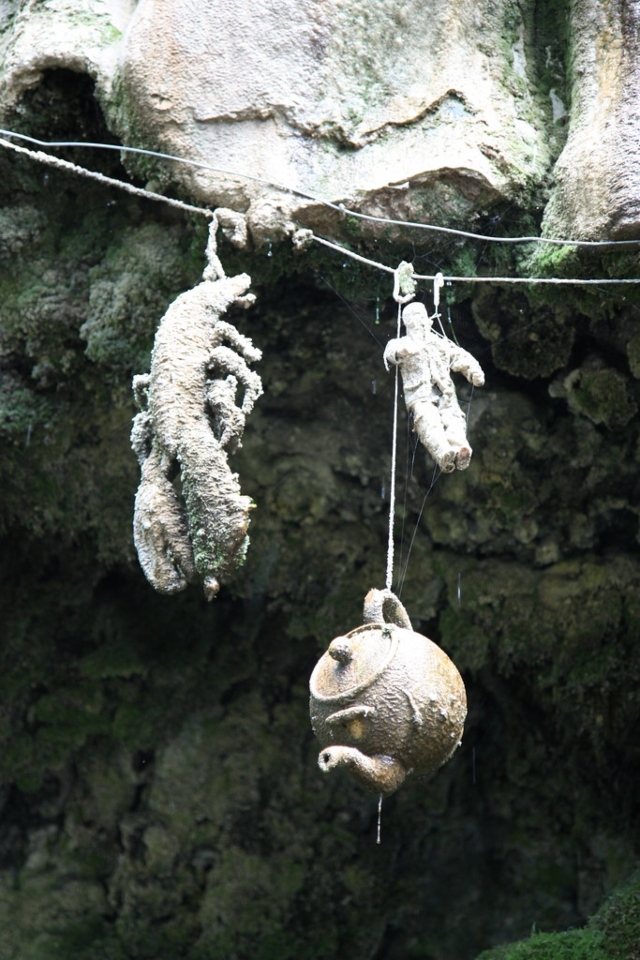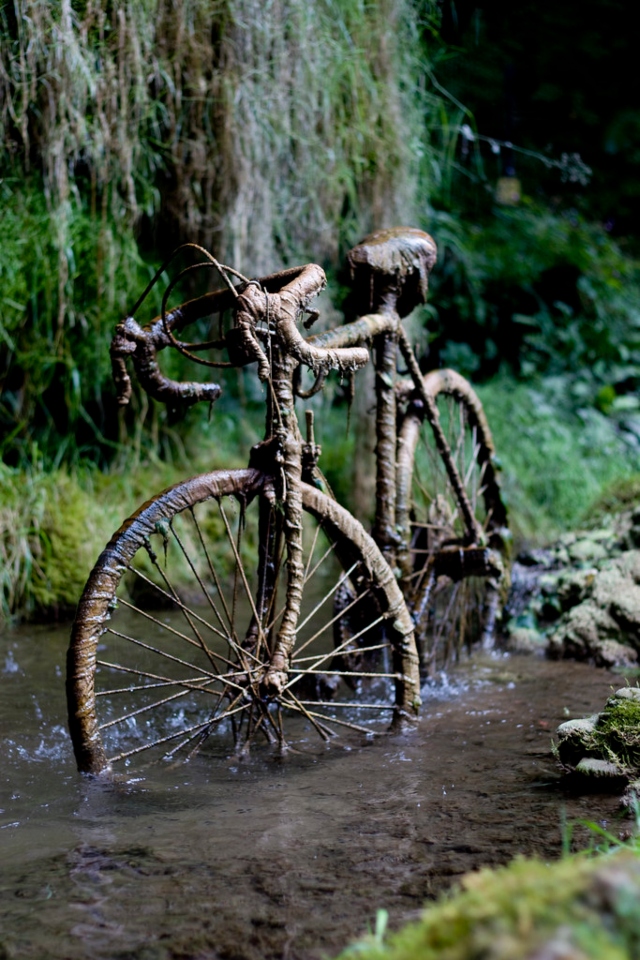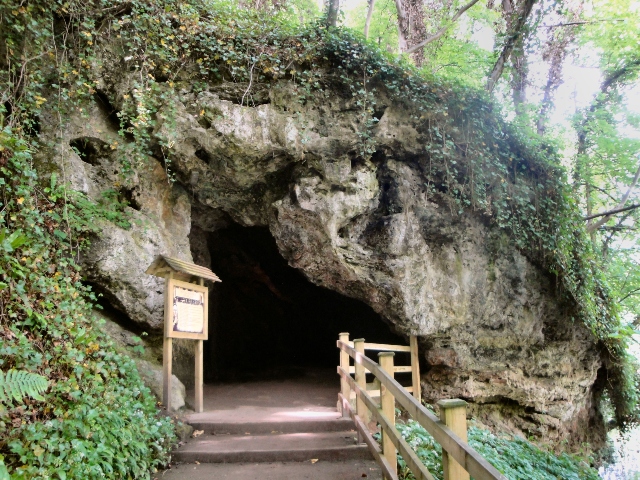
-
Mysterious Cave In England Turns Toys Into Stone – For Real! [Video]
24 Feb 2023 by Heinrich in Tech/Sci, Video, World
[imagesource:wikicommons]
It sounds like something out of a Medussa-inspired fairy tale, but what happens inside this cave near Knaresborough, England, is not science fiction, but rock-solid scientific fact. Welcome to Mother Shipton’s Cave, where you can turn almost anything into stone.
The cave is named after Mother Shipton, a local witch and prophetess who was born nearby in 1488. She became known as ‘Yorkshire’s Nostradamus, and whenever she spoke, people seemed to have taken note.
“The prophecies may not be all historically correct, and the stories may have been embellished slightly over the centuries […] Although we cannot be sure how much of the legend is true, what must be certain is that 500 years ago a woman called Mistress Shipton lived here in Knaresborough and that when she spoke people believed her and passed her words on.”
Whether the so-called witch had anything to do with the mystical powers of the cave is not clear, but the area has been the site of fascinated study for a long time. But, as with most ‘magic’, science has a perfectly reasonable explanation. The secret lies in the mineral content of the well that runs through the cave.
This weird quirk of the local geology gives this petrifying well the ability to turn a teddy bear into stone within three months, although less porous material like a shoe could take years before it becomes solid.
The well’s waters come up from 1.6 kilometres underground, where most minerals are dissolved. The water consists of iron, zinc, magnesium, aluminium, and calcium carbonate. If chemistry isn’t your thing, it would help to think of stalactites forming in the Congo Caves to get an idea of where we’re going with this.
500ml of water from the petrifying well weighs 10 grains more than 500ml of regular water, pointing to about 1,140 milligrams per liter of dissolved solids.
It is these solids that seep into objects within the cave, slowly turning them into stone. In fact, the entrance to the cave needs regular scraping to avoid the buildup of calcium carbonate sediment from the water, called tufa. Tufa is a type of limestone. It forms when carbonates dissolved in the water come out of the solution and become a solid, a process called precipitation.


[imagesource:flickr]
Luckily Mother Shipton’s Cave is well maintained and has become a popular tourist attraction, where one might even purchase one of the petrified teddy bears on sale. Have a look at the below video that explores this weird place:
A shoe left by Queen Mary inside the cave in 1923, as well as a top hat and bonnet from 1853, are still there, albeit now just lumps in the rock face.
Am I the only one wondering what would happen if someone decided to live in the cave?
[source:ifls&youtube]
Latest News
-
Powerful South African Short Film ‘The Last Ranger’ Scoops Up Awards And International Praise
[imagesource: Cindy Lee Director/Facebook] A compelling South African short film, The L...
-
Caprice Summer Has Started With Brunch (But Better) This Saturday + Other Lush Camps Bay Parties
[imagesource: Instagram/cafecaprice] Is it just me or has Summer been taking its sweet ...
-
Notre-Dame Cathedral In Paris Restored And Ready For Grand Reopening After Devastating Fire
[imagesource:wikimedia] After five years of work and millions in donations, The Notre-D...
-
Self-Destructing Number Plates: The Future Of Gauteng’s Roads Or Spy-Tech Fantasy?
[imagesource:worldlicenseplates.com] What sounds like a James Bond movie is becoming a ...
-
I Changed My Relationship With Food And You Won’t Believe What Happened Next
[imagesource:supplied] As the festive season approaches, it's time to deck the halls, g...
-






























